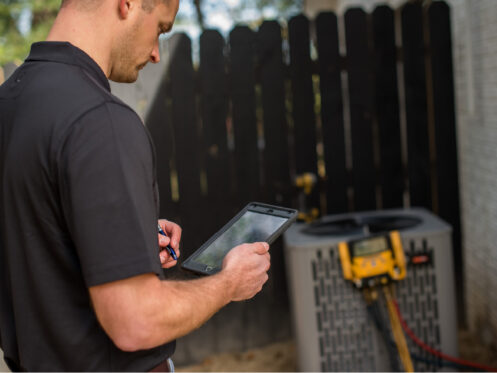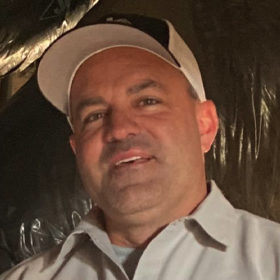Your HVAC system runs most efficiently when cared for on occasion. Our experts recommend annual preventative maintenance to keep it blowing hot and cold air and extend the lifespan of your units. This yearly maintenance is best left to the professionals for several reasons. However, there are a few things you can tackle yourself to keep your heating and cooling system operating between professional visits. Check out our list of DIY maintenance tasks and the services that should be handled only by a trained professional such as those at Cozy Home Services.
What Maintenance Can I Perform Myself?
When it comes to maintenance for your heating and cooling system, there is very little you can do on your own. There are many safety concerns to consider when working on an HVAC unit, and you could injure yourself if you aren’t sure what you are doing. You also may end up causing damage to your system or your home and belongings if you aren’t an HVAC expert. The following tasks you can safely and easily tackle alone.
Change Air Filters
Air filters within your HVAC system block dust, dirt, and allergens from the units and keep your indoor air cleaner. These filters should be changed at least once every three months. You can handle this task without a professional as the filters typically slide in and out with ease. Be sure to research and use the correct size and style of filter for your system.
Clean the Outside of the Units
Both indoor and outdoor units get dirty throughout the seasons. Wipe the outside of the units clean, removing dust and dirt. You may use a hose on the outside to wash away dirt. However, avoid using high-pressure water such as a power sprayer, and never spray water into the unit. You’ll also want to clear debris from the top and around the unit, leaving a 2-foot clearance on all sides.
Maintenance to Be Performed by the Professionals
Aside from cleaning the units and changing the air filters, the maintenance of your HVAC system should be left to the experts. A professional HVAC technician has the experience and knowledge required to safely and correctly handle the units. Take a look at the things your technician will do during the annual HVAC maintenance appointment.
Inspect Electrical and Gas Connections
Your HVAC system requires electricity and, sometimes, gas to operate. The technician will inspect electrical connections and wires going to and throughout the units, ensuring they are free from damage and securely connected. Improper wiring and loose connections may lead to shock or electrical fires. The technician will inspect gas lines as well, looking for a tight fit to avoid gas leaks. Gas leaks can cause serious health effects and could lead to explosions.
Lubricate Moving Parts
Some parts and components inside your heating and cooling units move as the machine runs. These parts require lubrication to prevent wear and tear from the friction of movement.
Inspect Belts and Pulleys
Your heater or air conditioner may contain belts and pulleys that help with movement inside the units. The technician will inspect these components, looking for signs that they are stretched or worn. Any damaged or loose parts should be repaired or replaced for efficient operation and lower risk of breakdowns.
Assess Parts and Components
Each of your HVAC units has dozens of individual parts and components, each providing a useful function to keep your system running. If one single part is damaged, it could cause the entire system to fail. The technician will inspect many of these parts to ensure they are damage-free and in good operational condition. Finding worn parts before they fail is a crucial part of the annual inspection and maintenance. By identifying these damaged and failing parts, our technicians help you avoid a complete breakdown when the temperatures reach extremes and leave you miserable.
Test Safety Controls
Heating and cooling units are outfitted with safety controls to stop operation when a critical failure exists. Your technician will check and test each of these, making sure they work when they should. These controls help prevent devastating damage to your system and reduce your risk of injury and property damage.
Clear Drain Lines
Your air conditioner creates moisture as it cools your home. This moisture comes in the form of condensation, which turns to water. The water drains away from your AC through a condensate drain line to avoid pooling inside and around the machine. Water can damage certain parts and wreak havoc on the electrical system of the unit. This drain line should be examined to ensure it is clear and free-flowing. The technician will check the line and clean it of dirt and debris if needed.
Listen and Smell
The most basic part of the annual maintenance and inspection is to listen and smell for abnormalities. You may notice a musty or burning smell the first time you turn the furnace or air conditioner on for the season. These smells are typical and will go away quickly. Aside from these first-run smells, you should not notice any odors while your heating and cooling units run. Additionally, the operation of your heater and air conditioner should be relatively quiet. If the technician finds odd smells or noisy operation, there could be a problem that needs to be addressed.
Check Refrigerant
Air conditioners require refrigerant to provide cool air for your home. Refrigerant levels inside your unit should be checked during maintenance to ensure you have enough to get through the season. The refrigerant will eventually run out if not topped off. If you have extremely low refrigerant in the AC, it could indicate a leak. Refrigerant should only be handled by a trained professional as exposure could cause serious health issues.
Calibrate the Thermostat
A thermostat is the device you use to control your HVAC system. This device allows you to set the temperature inside your house and tells your heating and cooling units to run until that temperature is reached. If you find that your house isn’t comfortable despite the thermostat being set to a temperature that should be comfortable, the technician may need to calibrate your thermostat. Your technician checks the thermostat by measuring the temperature in the room near where the thermostat is mounted and comparing it to the temperature displayed on the thermostat.
At Cozy Home Services, we understand how much you rely on your HVAC system to keep your home comfortable. We offer detailed inspection and maintenance to help your heating and cooling units stay safe, efficient, and operational. Between annual appointments, our technicians provide high-quality repairs and professional installations of air conditioners, furnaces, heat pumps, and mini-splits. We also offer a host of plumbing services such as pipe repair, drain cleaning, leak detection, and water heaters. Ask us about our indoor air quality solutions!
To schedule your annual HVAC maintenance in Vacaville, CA, call our expert team of technicians at Cozy Home Services.


